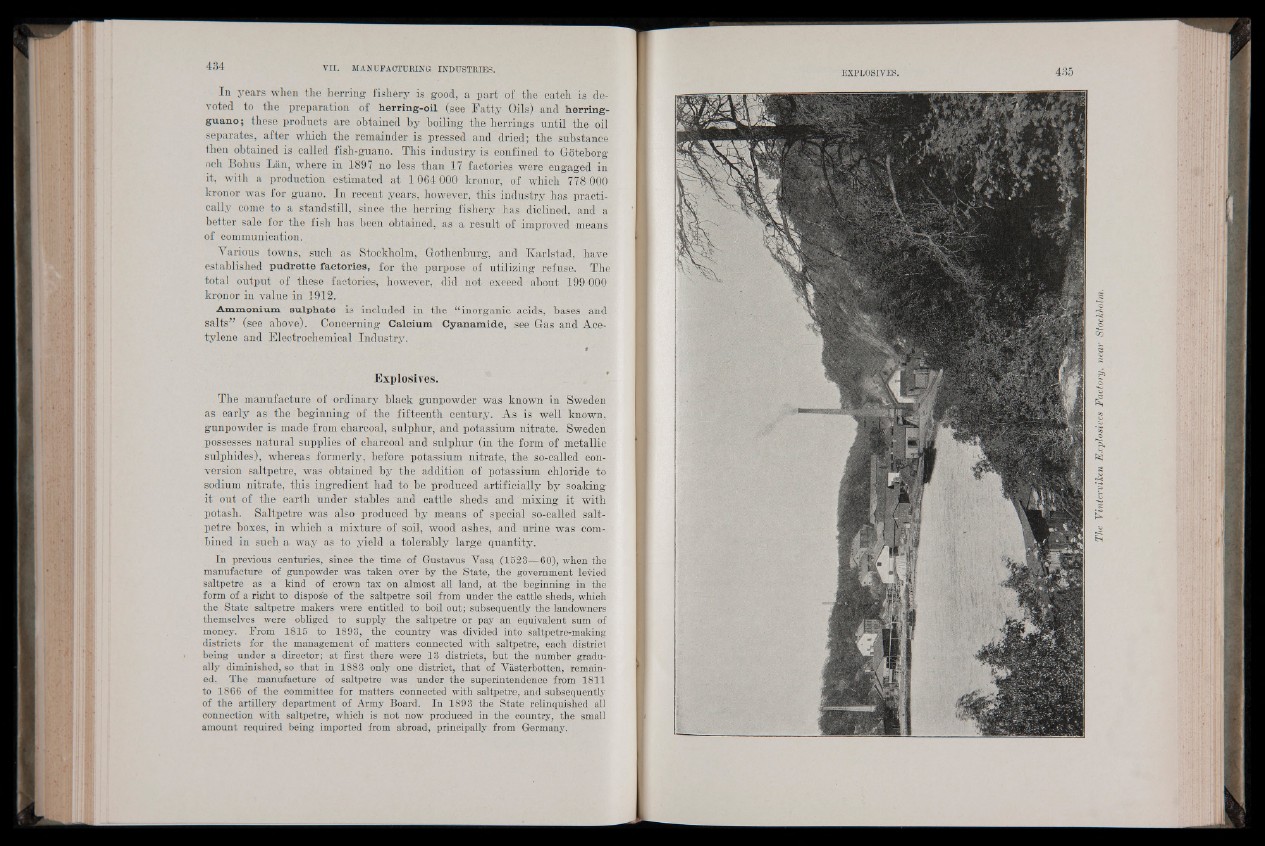
In years when the herring fishery is good, a part of the catch is devoted
to the preparation of herring-oil (see Fatty Oils) and herring-
guano; these products are obtained by boiling the herrings until the oil
separates, after which the remainder is pressed and dried; the substance
then obtained is called fish-guano. This industry is confined to Goteborg
och Bohus Lan, where in 1897 no less than 17 factories were engaged in
it, with a production estimated at 1064 000 kronor, of which 778 000
kronor was for guano. In recent years, however, this industry has practically
come to a standstill, since the herring fishery has diclined, and a
better sale for the fish has been obtained, as a result of improved means
of communication.
Various towns, such as Stockholm, Gothenburg, and Karlstad, have
established pudrette factories, for the purpose of utilizing refuse. The
total output of these factories, however, did not exceed about 199 000
kronor in value in 1912.
Ammonium sulphate is included in the “inorganic acids, bases and
salts” (see above). Concerning Calcium Cyanamide, see Gas and Acetylene
and Electrochemical Industry.
Explosives.
The manufacture of ordinary black gunpowder was known in Sweden
as early as the beginning of the fifteenth century. As is well known,
gunpowder is made from charcoal, sulphur, and potassium nitrate. Sweden
possesses natural supplies of charcoal and sulphur (in the form of metallic
sulphides), whereas formerly, before potassium nitrate, the so-called conversion
saltpetre, was obtained by the addition of potassium chloride to
sodium nitrate, this ingredient had to be produced artificially by soaking
it out of the earth under stables and cattle sheds and mixing it with
potash. Saltpetre was also produoed by means of special so-called saltpetre
boxes, in which a mixture of soil, wood ashes, and urine was combined
in such a way as to yield a tolerably large quantity.
In previous centuries, since the time of Gustavus Vasa (1523—60), when the
manufacture of gunpowder was taken over by the State, the government levied
saltpetre as a kind of crown tax on almost all land, at the beginning in the
form of a right to dispose of the saltpetre soil from under the cattle sheds, which
the State saltpetre makers were entitled to boil out; subsequently the landowners
themselves were obliged to supply the saltpetre or pay an equivalent sum of
money. From 1815 to 1893, the country was divided into saltpetre-making
districts for the management of matters connected with saltpetre, each district
being under a director; at first there were 13 districts, but the number gradually
diminished, so that in 1883 only one district, that of Vasterbotten, remained,
The manufacture of saltpetre was under the superintendence from 1811
to 1866 of the committee for matters connected with saltpetre, and subsequently
of the artillery department of Army Board. In 1893 the State relinquished all
connection with saltpetre, which is not now produced in the country, the small
amount required being imported from abroad, principally from Germany.